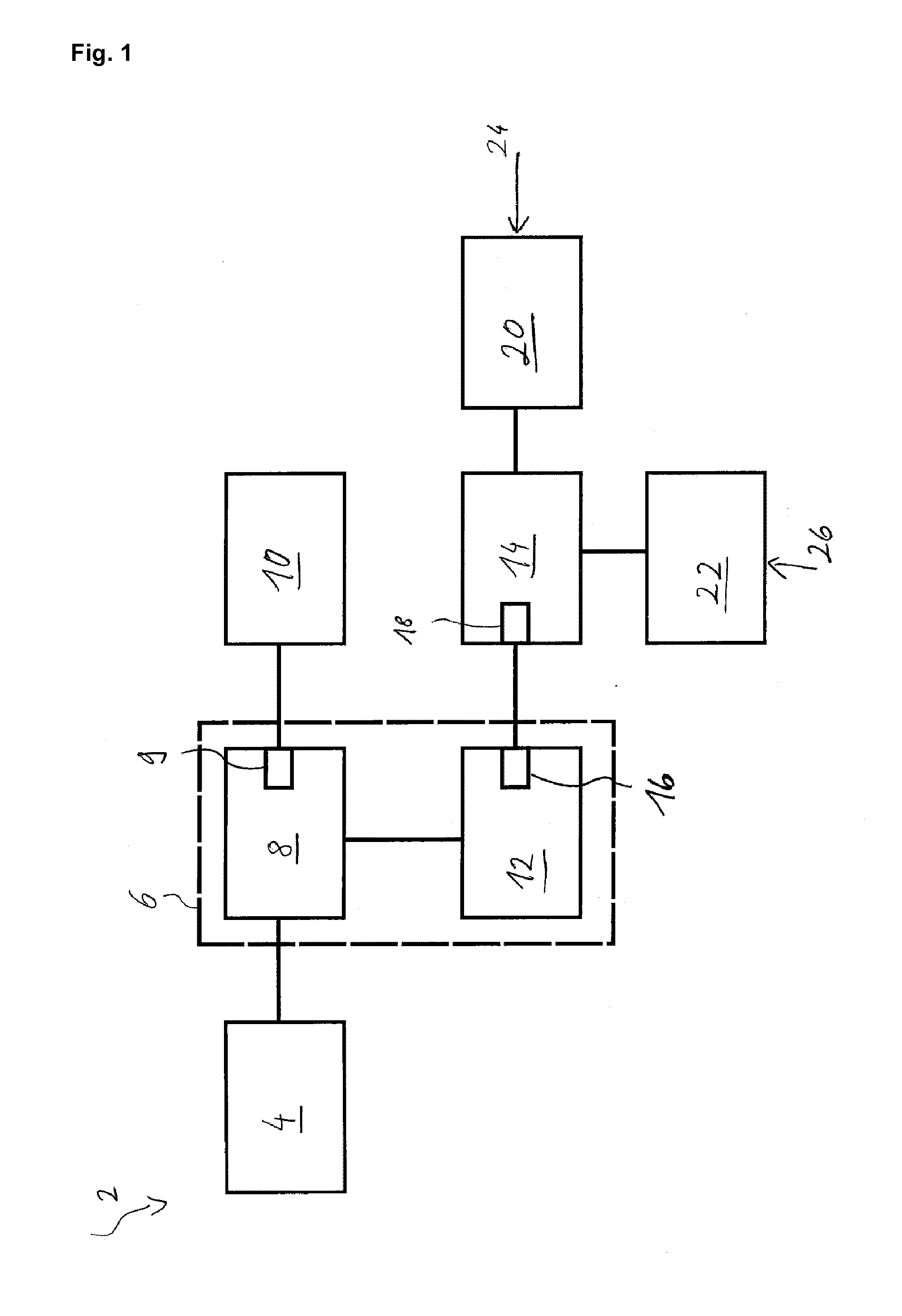Vehicle heating system
a heating system and vehicle technology, applied in vehicle heating/cooling devices, vehicle components, electrical devices, etc., can solve the problems of high frequency wave generation of wide-band modulated signals, heaters driven by pulse-wide-band modulated currents still suffer from other problems, and the voltage of pulse-wide-band modulated signals is problematic, so as to reduce costs
- Summary
- Abstract
- Description
- Claims
- Application Information
AI Technical Summary
Benefits of technology
Problems solved by technology
Method used
Image
Examples
Embodiment Construction
)
[0020]The vehicle heating system 2 according to the embodiment of FIG. 1 has a power source 4 that generates a direct current DC with an electrical power Pin. In this particular preferred embodiment of the invention, the power source can be 12 V lithium ion battery, a lithium polymer battery, a lead-acid battery or an alternator. The electrical power Pin with an input voltage Uin of 12 V and an input current Iin, is being inputted to a DC / DC converter 8 of a control unit 6. The DC / DC converter 8 outputs an output voltage supply Usupply between 3 V to 40 V to the foil based seat heater 10.
[0021]For instance, for high power operation i.e. if high heating power is required, the output voltage supply Usupply is greater than the voltage of the input DC Uin. On the other hand, for low power operation, i.e. if a lower heating power is required, the output voltage supply Usupply may be adjusted to values which are lower than the 12 V input voltage Uin.
[0022]The course of the output voltage...
PUM
 Login to View More
Login to View More Abstract
Description
Claims
Application Information
 Login to View More
Login to View More - R&D
- Intellectual Property
- Life Sciences
- Materials
- Tech Scout
- Unparalleled Data Quality
- Higher Quality Content
- 60% Fewer Hallucinations
Browse by: Latest US Patents, China's latest patents, Technical Efficacy Thesaurus, Application Domain, Technology Topic, Popular Technical Reports.
© 2025 PatSnap. All rights reserved.Legal|Privacy policy|Modern Slavery Act Transparency Statement|Sitemap|About US| Contact US: help@patsnap.com

